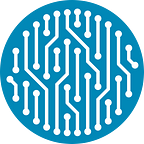Human intelligence and artificial intelligence (AI) are both complementary and valuable; we can achieve the best outcomes when the two work together, synergistically.
When describing human intelligence, the focus is on mental capacities and abilities that help people to reason, learn, communicate, think creatively, adapt to new situations, and solve problems. AI, on the other hand, is the simulation of human intelligence in machines. An AI machine is programmed to conduct tasks that require human cognitive abilities like decision making, reasoning, learning, and perception.
The relationship between these two is multifaceted in that while AI might be more efficient and accurate than humans, human intelligence is still superior in a number of situations such as creativity, common sense reasoning, and social/emotional intelligence.
The AI Journey
Artificial Intelligence (AI) has come a long way from being a science fiction dream to today’s reality of intelligent machines like smart virtual assistants, surgical robots, self-driving cars, and chatbots, just to name a few.
The simplest form of AI describes a computer acting and deciding in ways that appear intelligent. Alan Turing’s philosophy can help to understand AI better — programmable machines imitating how humans decide, speak, feel, and act. Organizational settings benefit the most from this type of intelligence: based on its imitating abilities, AI can easily identify informational patterns that optimize trends relevant to the job. Contrary to human behavior, as long as AI machines are fed with data, they will keep going without getting physically tired.
The qualities mentioned above mean that AI is the perfect candidate to put at work, in lower-level routine areas where tasks are repetitive and they take place within a closed management system. This type of system should not be influenced by external forces such as work meetings. Case in point, the AIWORK AI Computer Vision algorithms running on nodes using CPU/GPU resources that scan media files, generate enhanced metadata including time-coded tags, classification, categories, transcripts and translations, and an index of the video objects. Since this kind of work is subject to rigid procedures and is repetitive, optimizing productivity and efficiency can happen through AI as this technology can perform the tasks in more accurate ways to human workers.
Yes, AI is now mainstream technology in most of today’s industries and has become a common part of man’s daily life, however, one cannot help but think, is AI sufficient in itself?
Why AI Needs Human Intelligence
Considering we are in the video content scene and AI can classify and tag video at scale, it still is not perfect and it needs human intelligence for verification, validation and correction as well as training to teach it patterns of faces, objects, scenes, among others. AI can stick to its programming, while humans who are better at comparing and identifying faces and objects to each other can research what they don’t know and help improve the AI systems. A hybrid approach of combining AI with human verification and correction is the most optimal way of achieving AI computer vision at scale and accuracy.
AI needs human intelligence because human abilities are more expansive. While AI is only responsive to the available data, humans can judge, feel, imagine, and anticipate changing situations, allowing them to shift from short-term to long-term concerns. Humans have what we call, authentic intelligence, which is why the AIWORK protocol depends on crowdsourced AI Human Experts to help create, verify and validate AI data sets that make AI smarter. Authentic intelligence is needed in the open system that is found in the video content arena where the organization interacts with the external environment of viewers, content creators, and advertisers, and therefore has to handle outside influences. The AIWORK team, in as much as they make use of AI, require the ability to anticipate and work with sudden changes in the field of video content, while remaining creative in distilling a vision and future strategy.
The idea that human intelligence and AI need each other implies that we have situations where human intelligence is essential and AI cannot fully replace it, and situations where AI can enhance and augment human intelligence. For example, in areas such as Video Content, transportation, finance, and healthcare, we can leverage AI’s prowess to help us make better decisions, thereby improving efficiency and increasing accuracy. Overall, there needs to be a working balance or equilibrium point between AI and human intelligence for optimal results — when the two work together synergistically the world can achieve great things.
More on AI, human intelligence, blockchain tech, and efficiency video content systems on our socials:
